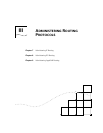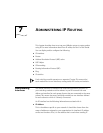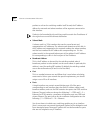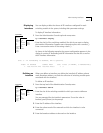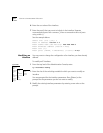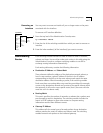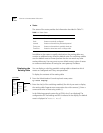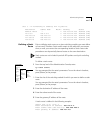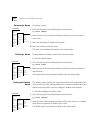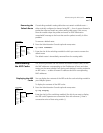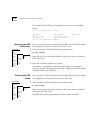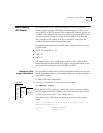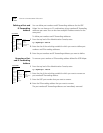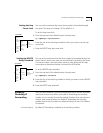
7-6 CHAPTER 7: ADMINISTERING IP ROUTING
■ Status
The status of the route provides the information described in Table 7-1.
In addition to the routes to specific destinations, the routing table may
contain an additional entry called the default route. The switching module
uses the default route to forward packets that do not match any other
routing table entry. You may want to use a default route in place of routes
to numerous destinations all having the same gateway IP address.
Displaying the
Routing Table
You can display a switching module’s routing table to determine which
routes are configured and if they are operational.
To display the contents of the routing table:
1 From the Administration Console top-level menu, enter:
ip route display
2 Enter the slot(s) of the switching module(s) for which you want to display
the routing table. Separate non-consecutive slots with commas (,). Enter a
consecutive series of slots using a dash (-).
In the following example, routes for an ESM in slot 3 are displayed. The
configuration of IP forwarding and RIP is indicated in the display. The default
route is displayed as “
Default Route”.
Table 7-1 Route Status
Status Description
Direct Route to a directly connected network
Static Route was statically configured
Learned Route was learned using indicated protocol
Timing out Route was learned but is partially timed out
Timed out Route has timed out and is no longer valid
Top-Level Menu
system
ethernet
fddi
tokenring
bridge
➧ip
ipx
appletalk
snmp
analyzer
script
logout
interface
➧route
arp
udpHelper
forwarding
rip
ping
statistics
➧display
static
remove
flush
default
noDefault




